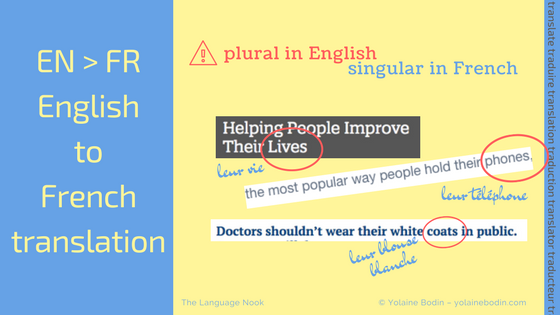When translating, it is important to remember that the subject position is often not the same in English and French sentences.
Let’s look at this sentence:
- When he lived in India, Paul used to go for long walks at nightfall.
In this sentence, we are reading information about Paul, but as is often the case in English, the subject Paul only appears in the second part of the sentence. In the first part, the personal pronoun he is used.
In other words, in this example, the first subject he does not give us detailed information. We know the author is talking about someone who is male because of the use of he, but we have to wait for the second part of the sentence to know precisely that he is Paul.
If you want to translate this type of sentence from English to French, then you will need to reconsider the subject position.
Although you may come across a similar sentence construction in French, it is usually better and more French-like to do the opposite. Thus, in your translation, consider placing the specific subject first:
- Quand Paul vivait en Inde, il faisait de longues promenades à la tombée du jour.
Let’s look at another similar example:
- When they got home, the Bradleys had dinner and went to bed.
Here again, the actual specific subject is introduced in the second part of the sentence in English, but in French it will come first:
- Quand les Bradley sont arrivés chez eux, ils ont dîné et sont allés se coucher.
This way, we know from the very beginning of the sentence who we are talking about. It ensures a smoother reading to the French mind.
Of course, the reverse is also true. If you have to translate a text from French into English:
- Quand Lisa était petite, elle était très bavarde.
Remember that in English you don’t always need to introduce the subject first and can use the personal pronoun instead:
- When she was a child, Lisa was very talkative.
There you are! You can now make sure the subject is in the right position in your translation. Congratulations! 🙂





C’est très clair , merci Yolaine !
Thank you Marianne 🙂